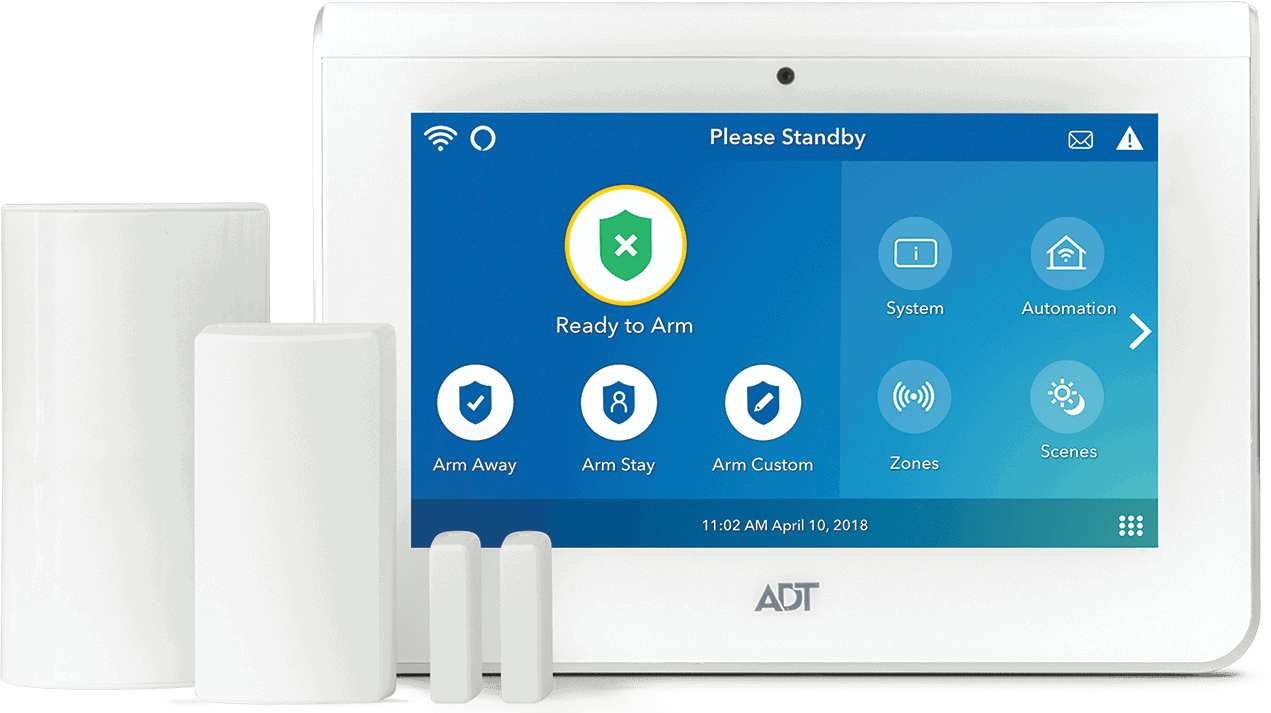You might know that sensors are the backbone of any home security system. They help keep the bad guys out, working day and night to put a perimeter of protection around your home. But… we recently found that Vivint’s sensors can do a lot more than simply safeguard the castle.
We had a Vivint smart home security system installed in our place so that we could test it day and night. In the process, we got well acquainted with their entry and motion sensors, glass break sensors, and even their environmental sensors. We think you’ll like what we found. Let’s dive right in!
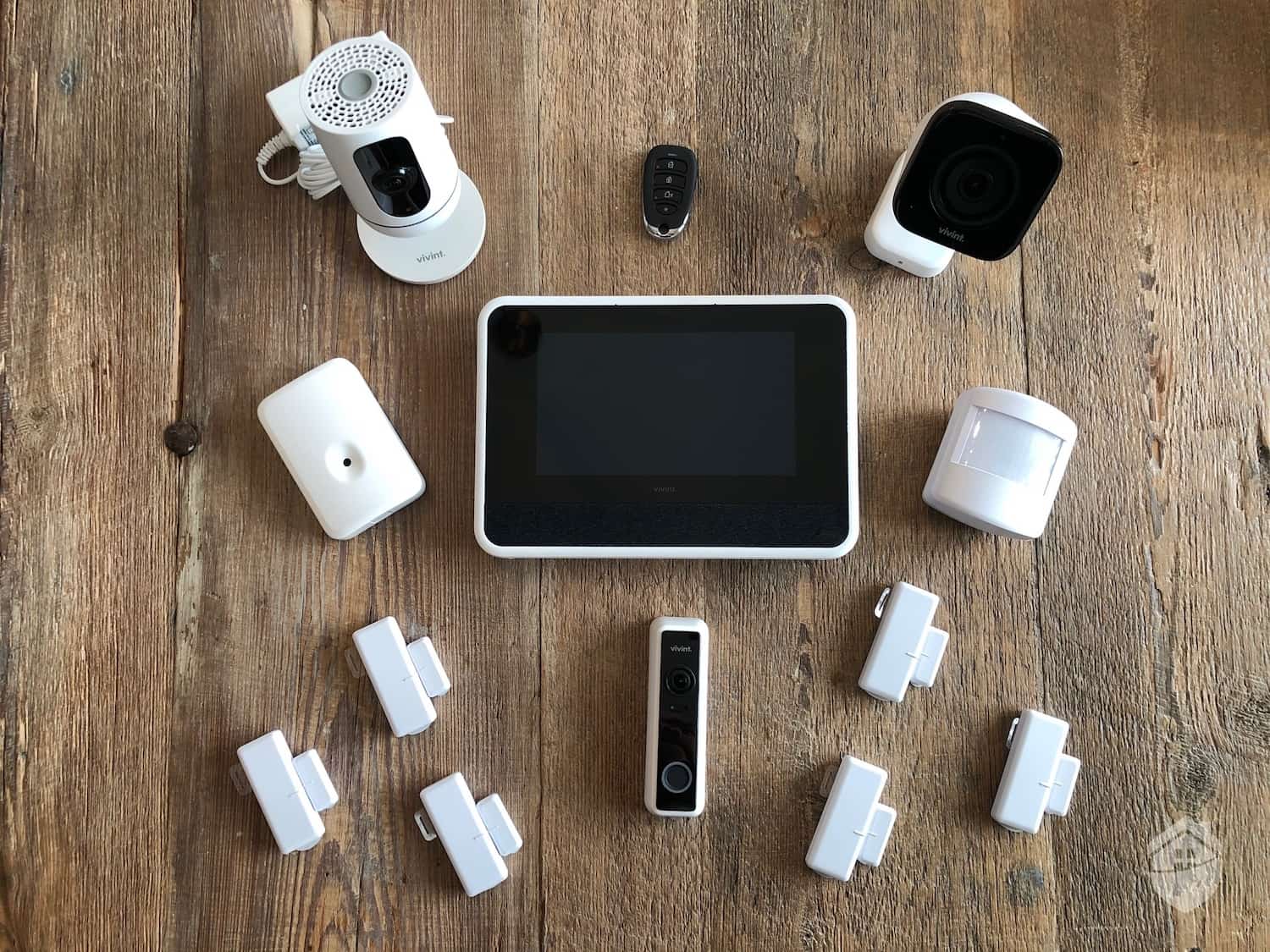
Vivint Equipment
Our Full Experience with Vivint Sensors
Door/Window Sensors
Vivint offers two types of entryway sensors, the peel-and-stick door/window sensors, and their recessed door sensors. It’s rare that a home security company offers to install recessed sensors, so we’re excited to share these with you in just a bit. But first, the peel-and-stick variety.
These are your run-of-the-mill magnetic sensors, nothing fancy. It’s what you get with every home security system. They get the job done, but they certainly aren’t easy on the eyes. Keep in mind that if you choose these Vivint sensors, they’ll be highly visible — especially on your doors. We understand this is a turnoff for some people, but honestly, we’re used to it.
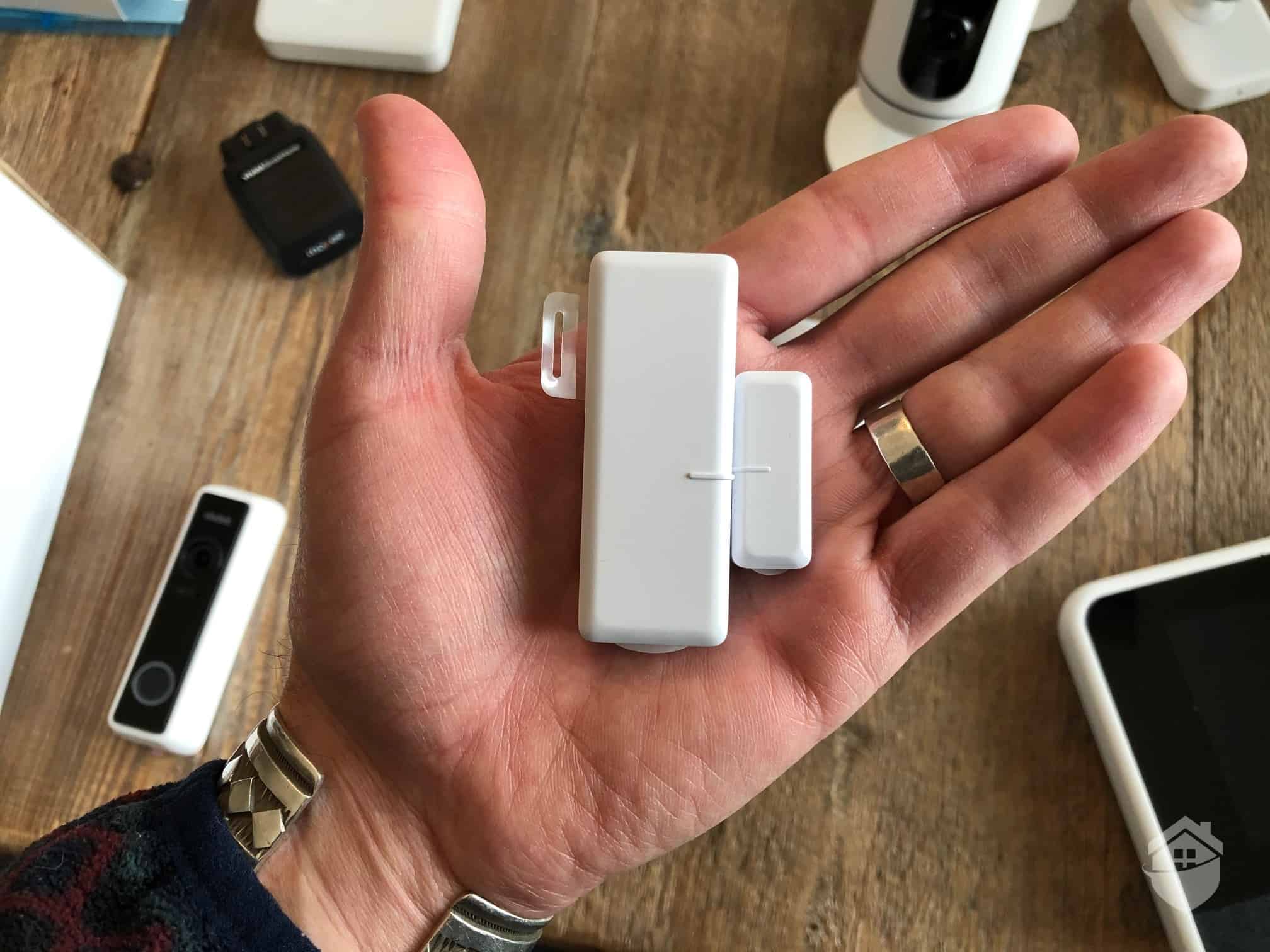
Vivint Door and Window Sensor
How It Works: These sensors use a magnetic contact that, when separated, send a signal to the Vivint Smart Hub, which then transmits a signal to the professional monitoring center. If a burglar picks your lock or somehow opens your window, the alarm will sound and your system engages in active emergency mode.
Note that for the purposes of testing Vivint, we chose the external peel-and-stick sensors. However, if we were serious about having Vivint for the long-haul, we would have definitely gone with their more permanent and impressive recessed sensors (recommended for homeowners!).
But before we give the rundown on the recessed sensors, it’s worth mentioning that Vivint requires professional installation. We actually prefer it this way — especially since we also purchased Vivint’s Outdoor Camera Pro. The Outdoor cam is amazing, but it’s wired, so it would’ve been a bear to install on our own. When the dust settled, our install fee was waived (Vivint does this a lot), and the technician was finished within 3 hours. Here’s Don, our Vivint tech, mounting a window sensor in our Master bedroom…
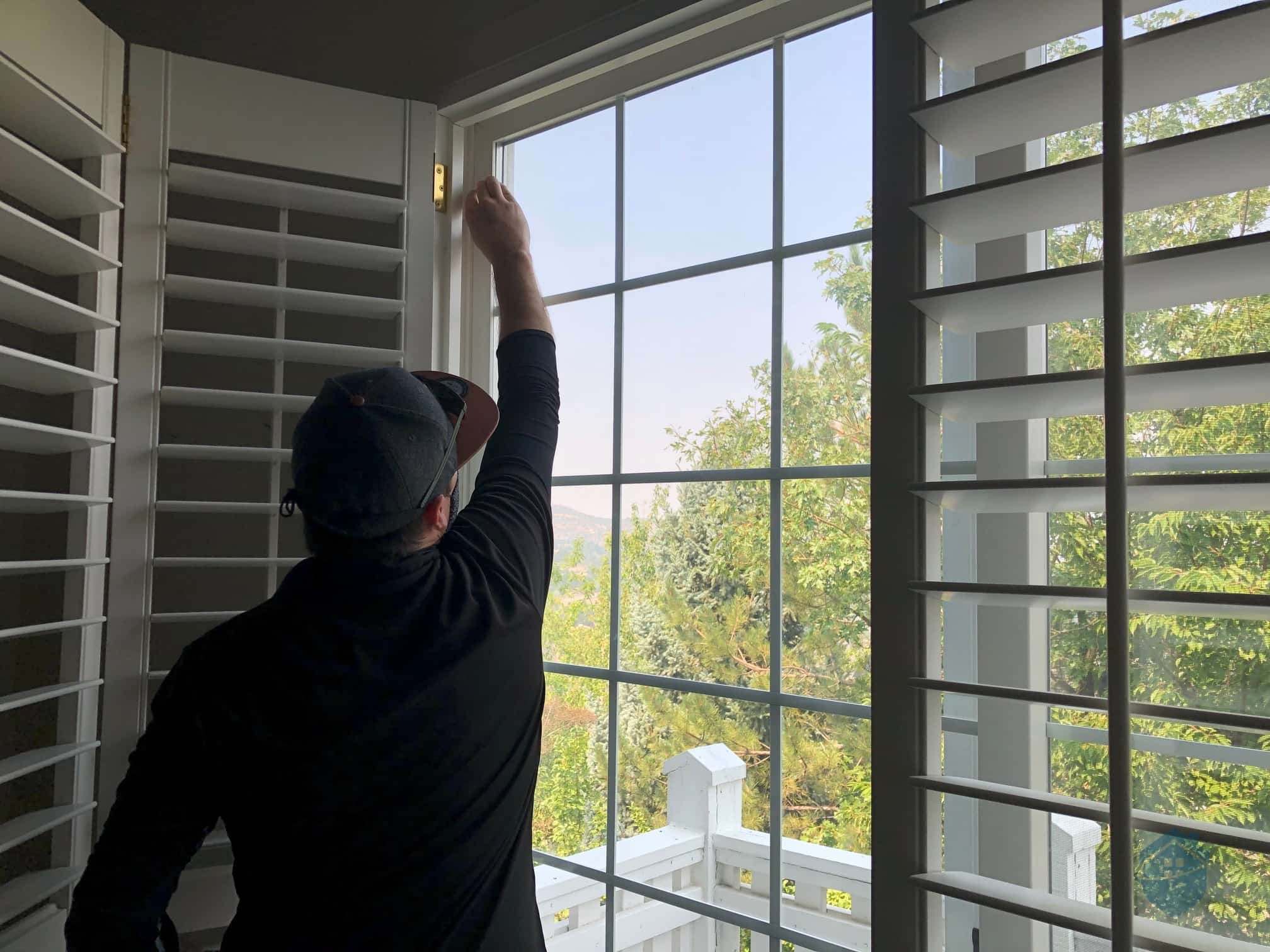
Installing Vivint Window Sensor
Remember how we said Vivint’s entry sensor isn’t easy on the eyes? Have a look at the comparison below, with our Ring Alarm sensor on top, and Vivint’s sensor beneath.
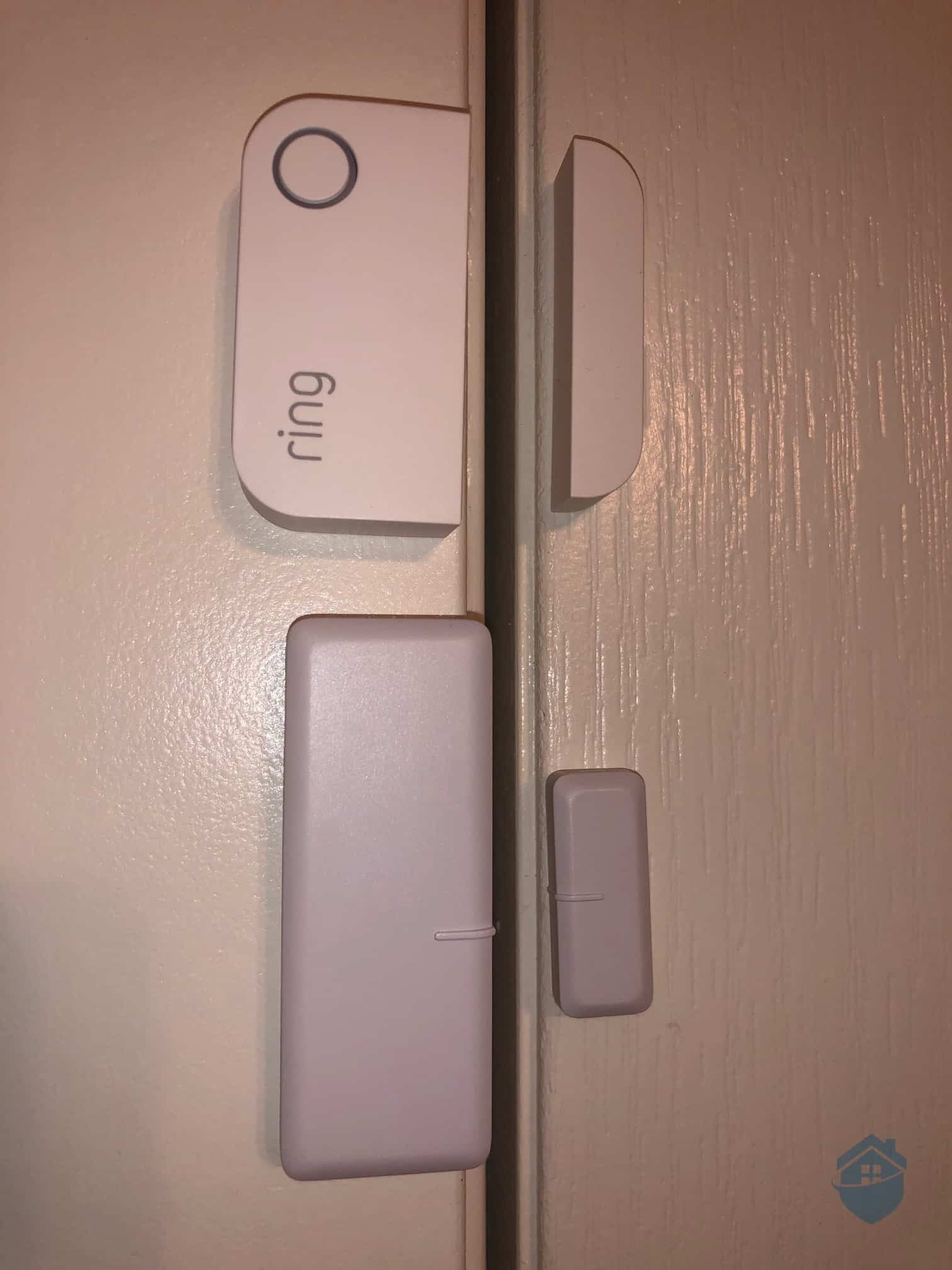
Comparing Vivint Door Sensor vs Ring Door Sensor
Of course, comparing Ring to Vivint is apples and oranges (Vivint is light-years beyond Ring in terms of features & tech), but this illustrates how Vivint’s sensor design seems to be an afterthought. You win some, you lose some.
Vivint’s Recessed Sensors
In our expert opinion, the next best thing to an invisibility cloak is a Vivint recessed door sensor. Here’s the deal — these sensors are invisible to the human eye, as they mount on the inside of your door. Technically, Vivint calls these the DW20 door sensors, and here’s what they look like…
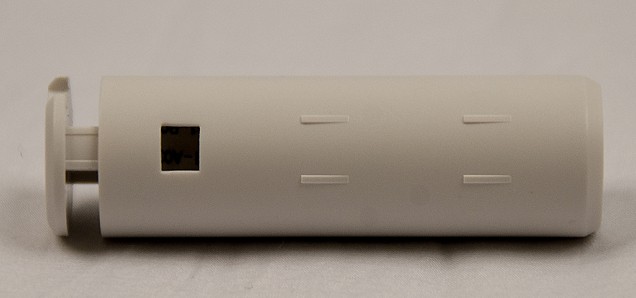
DW20 door sensor
Did You Know? Another brand that we like, ADT home security, also offers recessed door sensors. As far as we know, ADT is Vivint’s biggest competitor in the market. But if we had to choose, we think Vivint has the edge on ADT in most categories.
Here’s another instance when Vivint’s professional installation makes sense to us. These little shotgun-shell looking devices bore into your door and door frame, so it’s a project you’ll want the pros to tackle. Note that it uses a magnet contact point, just like the peel-and-stick sensors, but the genius is that these recessed sensors are out of sight and out of mind. Also, an added benefit is that you don’t have to worry about the sensor losing its adhesive stickiness, falling off the door and causing a false alarm (trust us, this is never fun at 3 am). And if you have an unusual door frame alignment or shape, the recessed sensor might be your only option.
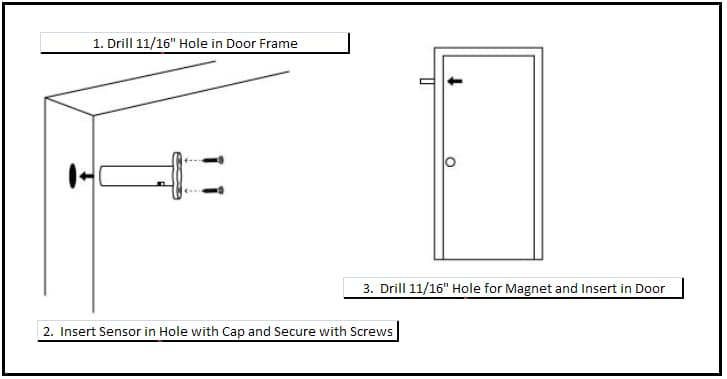
DW20 Installation
Vivint claims the batteries on their recessed sensors can last 10+ years, but in our experience, this typically depends on sensor location. For instance, we don’t imagine the battery on a front door sensor lasting 10 years — especially in a high-traffic household with lots of family members. But even if you get 3-5 years of battery life, that’s a win in our book. Have a look at the internal workings and battery housing of Vivint’s recessed sensors below.

DW20 door sensor components
FYI: Vivint lists the Operating Temperature Limits as 32°F to 120°F (0°C to 49°C). This should be fine for most regions in the U.S. But if you live in a place that consistently drops below zero, your recessed sensor could potentially go offline. This is just a good rule of thumb to remember… just because you can withstand the elements doesn’t mean your security equipment can!
Vivint Motion Sensors
Vivint’s motion sensor is fairly straightforward. When your system is armed in “Away” mode, it’s capable of detection motion and sounding the alarm. Just remember not to arm your system “Away” when you’re actually home. This is a rookie mistake that is guaranteed to give you a fright.
Aesthetically speaking, it’s not the smallest or most streamlined motion sensor we’ve seen (that would be SimpliSafe’s motion sensor). But then again, it’s not a fashion contest. Here’s what you can expect in the looks department…
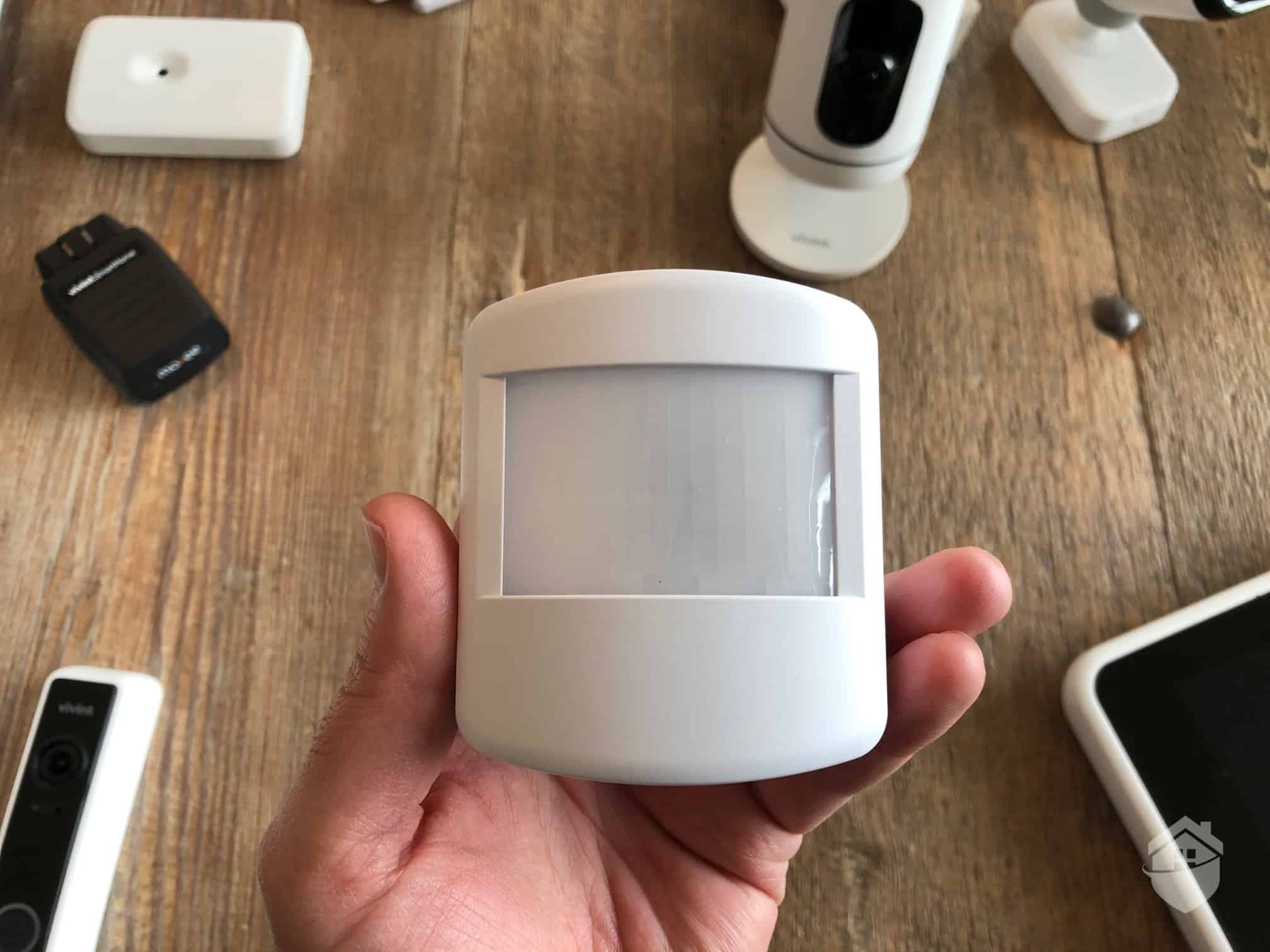
Vivint Motion Sensor
Our Vivint tech Don gave us his thoughts on best placement, and we decided to mount it in the dining room that overlooks the living room. This would give us maximum detection range — which, by the way, is a 75° field of view (very standard), and it can sense moving objects up to 40 feet away. Also, expect about 2-5 years of battery life, which is typical for most motion sensors we’ve seen.
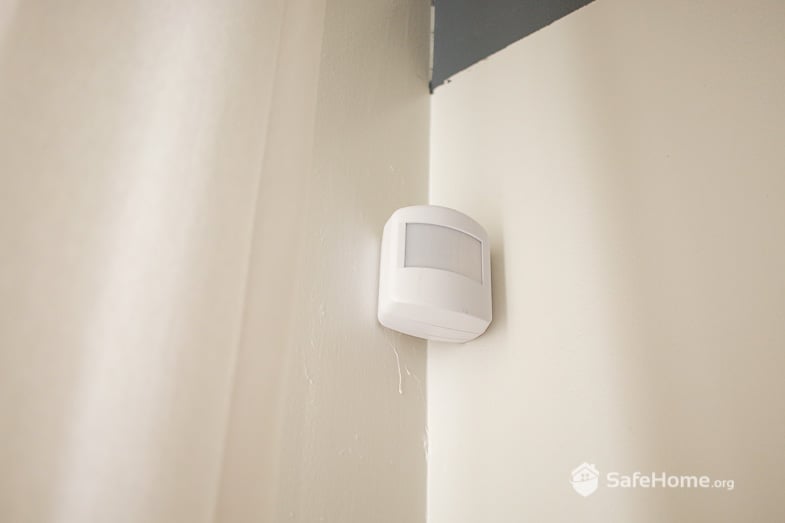
Vivint – Motion Sensor Installed
Now, something worth mentioning here is pet ownership. If you have a big bruiser of a dog, his lumbering presence might trip the motion sensor. The truth is, you’ll have to get rid of your beloved pet if you want to use Vivint motion sensors. Kidding! of course.
Just pop the motion sensor off its bracket and flip the switches on the back of the device. You’ll see two switches — one labeled “Pet Immunity” and the other “Sensitivity.” If you have big dogs, turn on Pet Immunity and adjust the sensitivity to low for good measure. And that’s it! You’re back in business. For smaller pets, just turning on Pet Immunity should do.
Pro Tip: Get creative with your sensor use. You can stick a door/window sensor on a liquor cabinet to keep the teenagers out, or put a motion detector near your water heater so it becomes a no-crawl zone for toddlers. Oh, and we’re huge fans of sensors on gun vaults. The point is, entry sensors and motion sensors offer wide-ranging versatility.
Vivint Glass Break Sensors
As you know, criminals can be downright unpredictable. They won’t always pick a lock or enter through an unlocked window. Sometimes they smash and grab — shattering a window and gaining entry that way. We’ve heard of instances where a broken window keeps the stick-on entry sensor intact (entry sensors stick to the window frame, not the glass itself!). That’s where a Glass Break Sensor comes in handy. Here’s what that looks like…
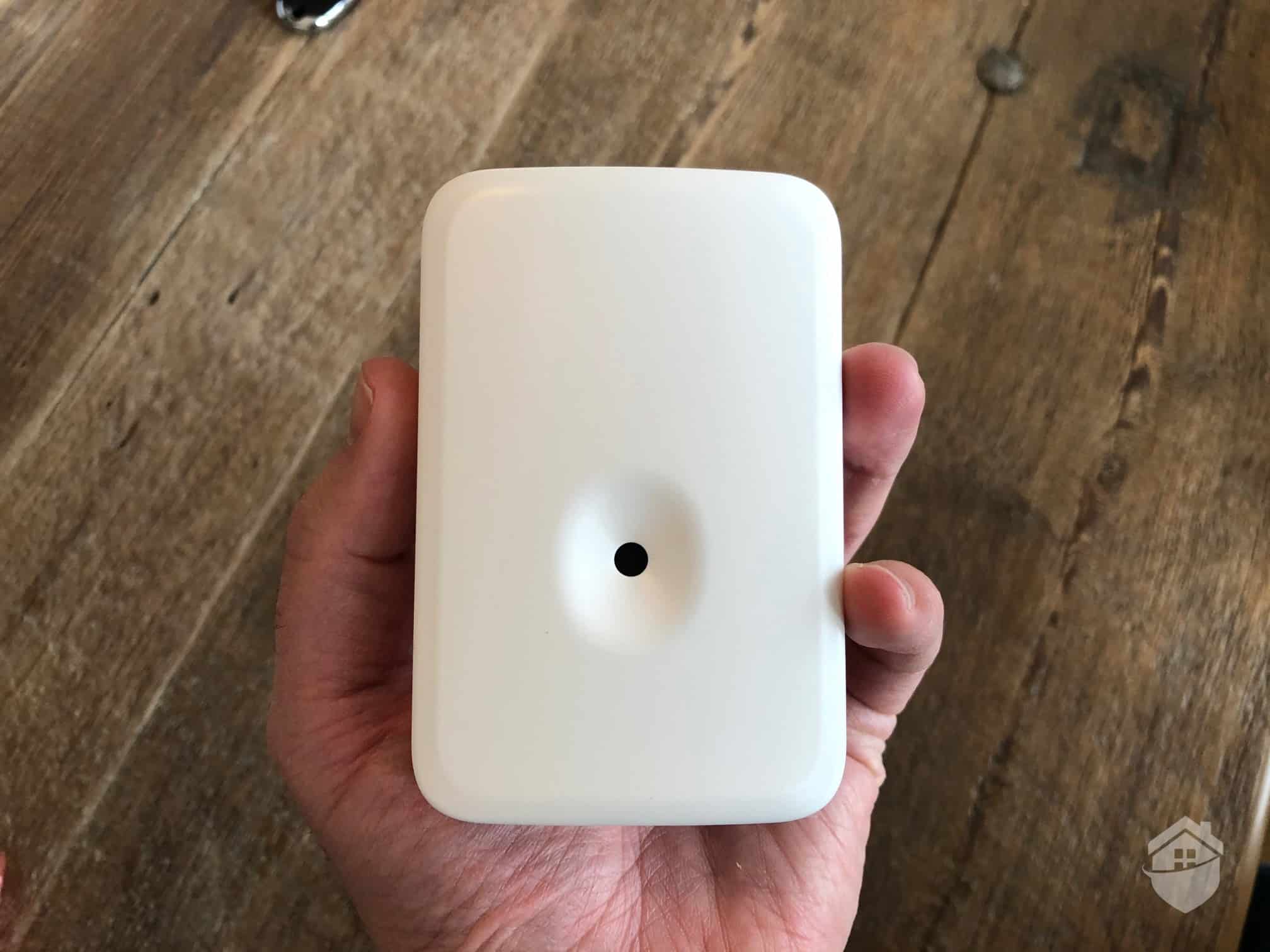
Vivint Glass Break Sensor
This sensor has a built-in microphone that picks up high-frequency noises, like glass shattering. You don’t have to mount it on a window (in fact, you shouldn’t!). Instead, your Vivint tech will place it in a central location where you have lots of windows. See below for a pic we snapped of Don installing our glass break sensor between two bedrooms.
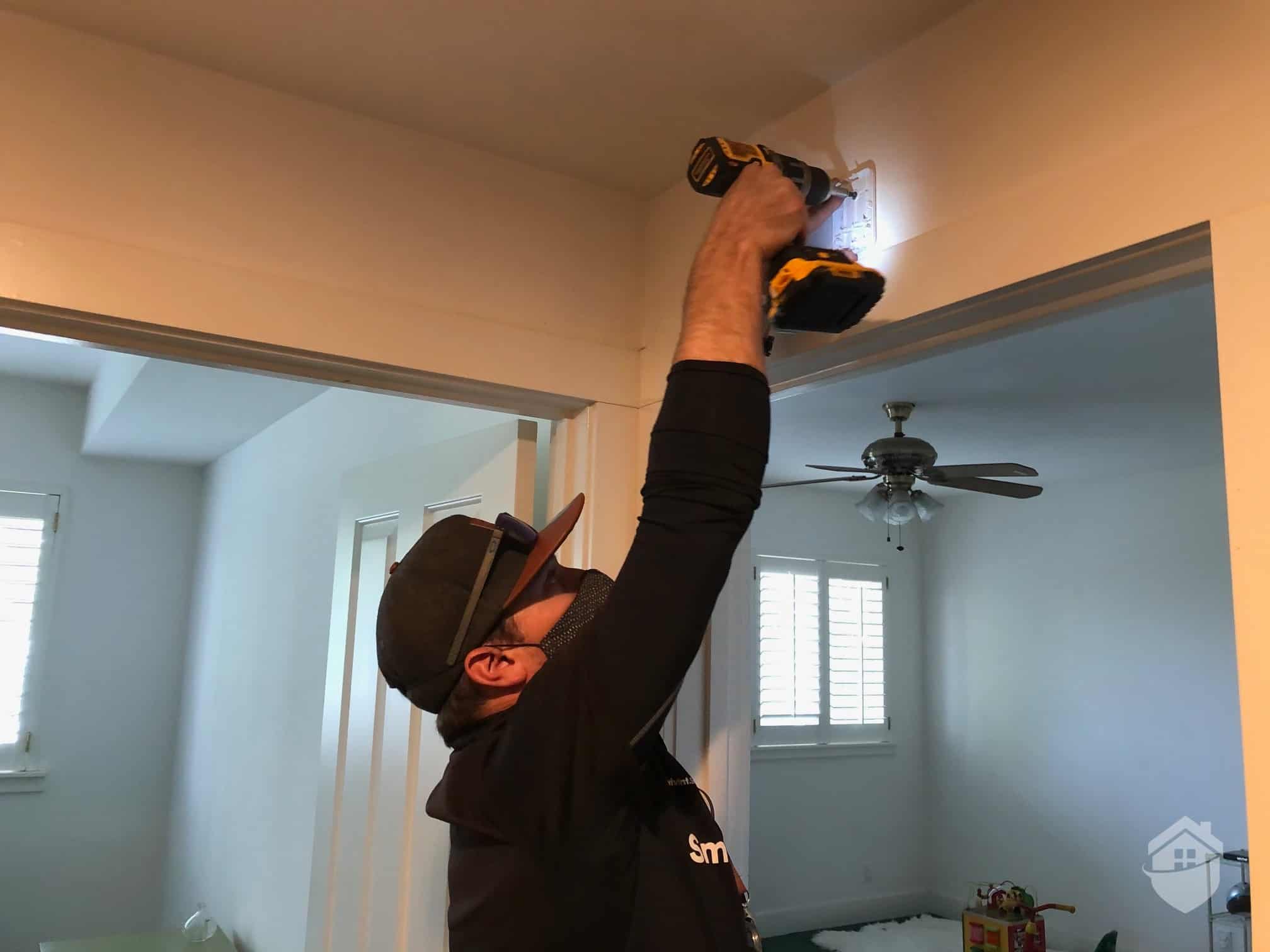
Don Installing the Vivint Glass Break Sensor
Pro Tip: Location matters with glass break sensors. In hindsight, our hallway might not have been the best location for the sensor, as now we’ll have to keep the bedroom doors open for the sensor to function correctly. No biggie, we can pop out the screw and relocate it ourselves.
You’ll want to keep in mind that glass break sensors are known to be finicky. Sure, they detect high-frequency noises like glass breaking. But do you know what else is high frequency? 1) A yappy little dog, 2) dishes breaking in the sink (oops!), and 3) even glass breaking on TV. So you might need to take a break from the Netflix docu-drama “Throwing Rocks in Glass Houses.” Overall, they do add an additional layer of security. But do we think they’re totally necessary? Probably not.
Note that you can get glass break sensors from most home security companies these days, but you probably won’t find them with some of the more affordable DIY brands.
Vivint Environmental Sensors
Vivint also sells environmental sensors that can keep an eye on things like fire, flooding, frozen pipes, and carbon monoxide (CO). Don offered to install these for us, but we passed since they’re a bit pricey. We also have some Frontpoint environmental sensors that we’re pretty happy with.
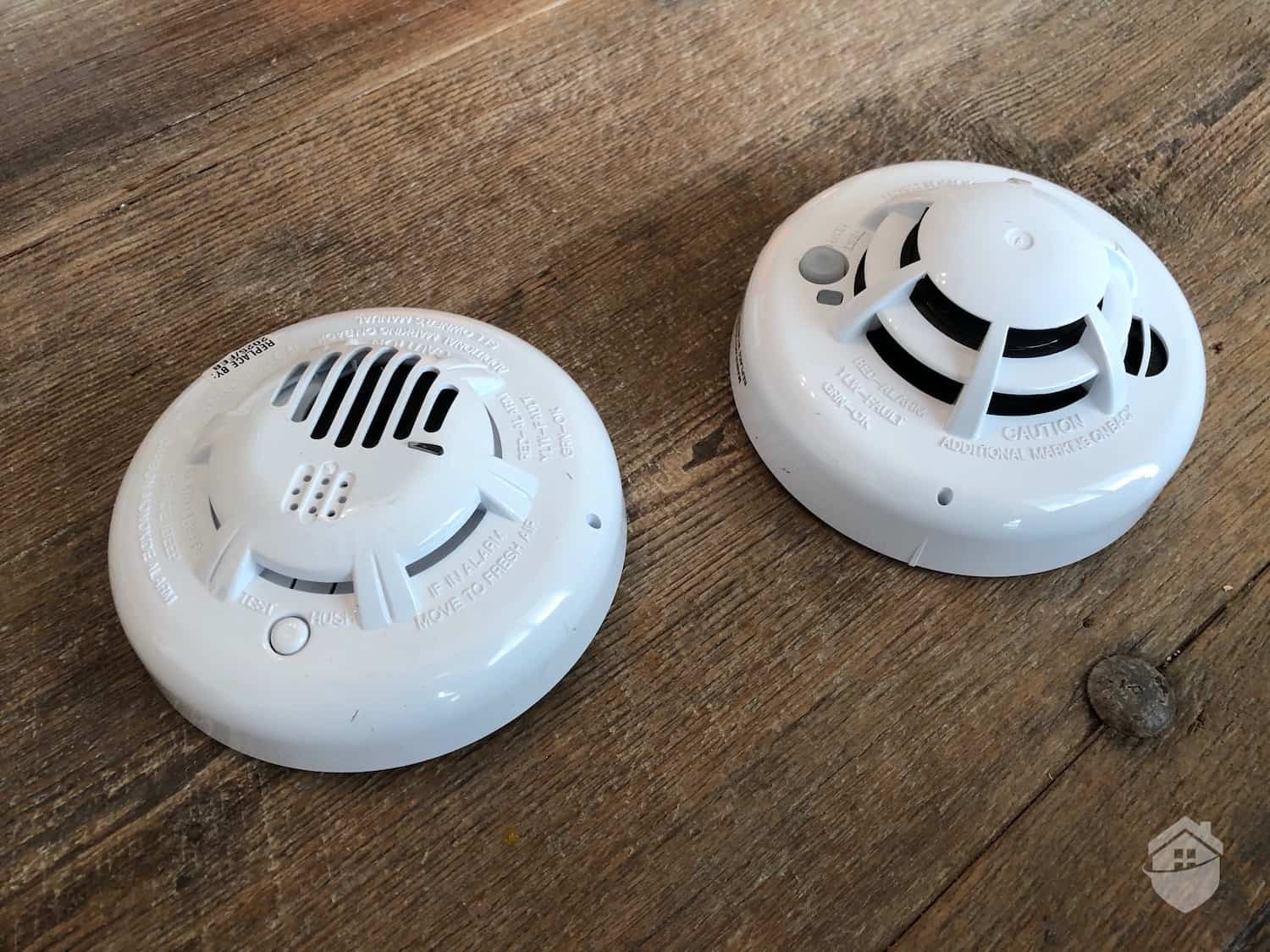
Vivint Smart CO/Smoke Detectors
But if you’re going to have a Vivint smart home security system installed, we do recommend getting these environmental hazard sensors — and doubly so if you need to protect a vacation home or rental in a different city or state. This way, if a fire or other calamity strikes, you’ll get an instant alert in the Vivint app and (hopefully) have plenty of time to send first responders.
Vivint Sensor Prices
Here’s our roundup of Vivint’s equipment prices. Their entry sensors are reasonably priced at $35, but their other sensors can ring up quite the bill.
| Vivint Sensors | Sensor Type | Price |
|---|---|---|
| Door/Window Sensors | Entry | $35 |
| Recessed Sensors | Entry | $35 – $55 |
| Motion Sensors | Motion | $99 |
| Glass Break Sensor | Glass | $99 |
| Environmental Sensors | Smoke, Fire, Flood, Freeze, CO | $50 – $100 |
The Vivint Smart Hub
Now we know this isn’t a sensor, but before we wrap up it’s worth mentioning that Vivint systems are controlled by their 7” touchscreen control panel called the Smart Hub. Each of your Vivint sensors can be accessed and managed right in here. You’ll also be able to view live-stream footage and control the Vivint Outdoor Camera Pro and Doorbell Camera Pro from this panel. For us, we mostly used the app-based controls, but it was nice having the Smart Hub hanging around.
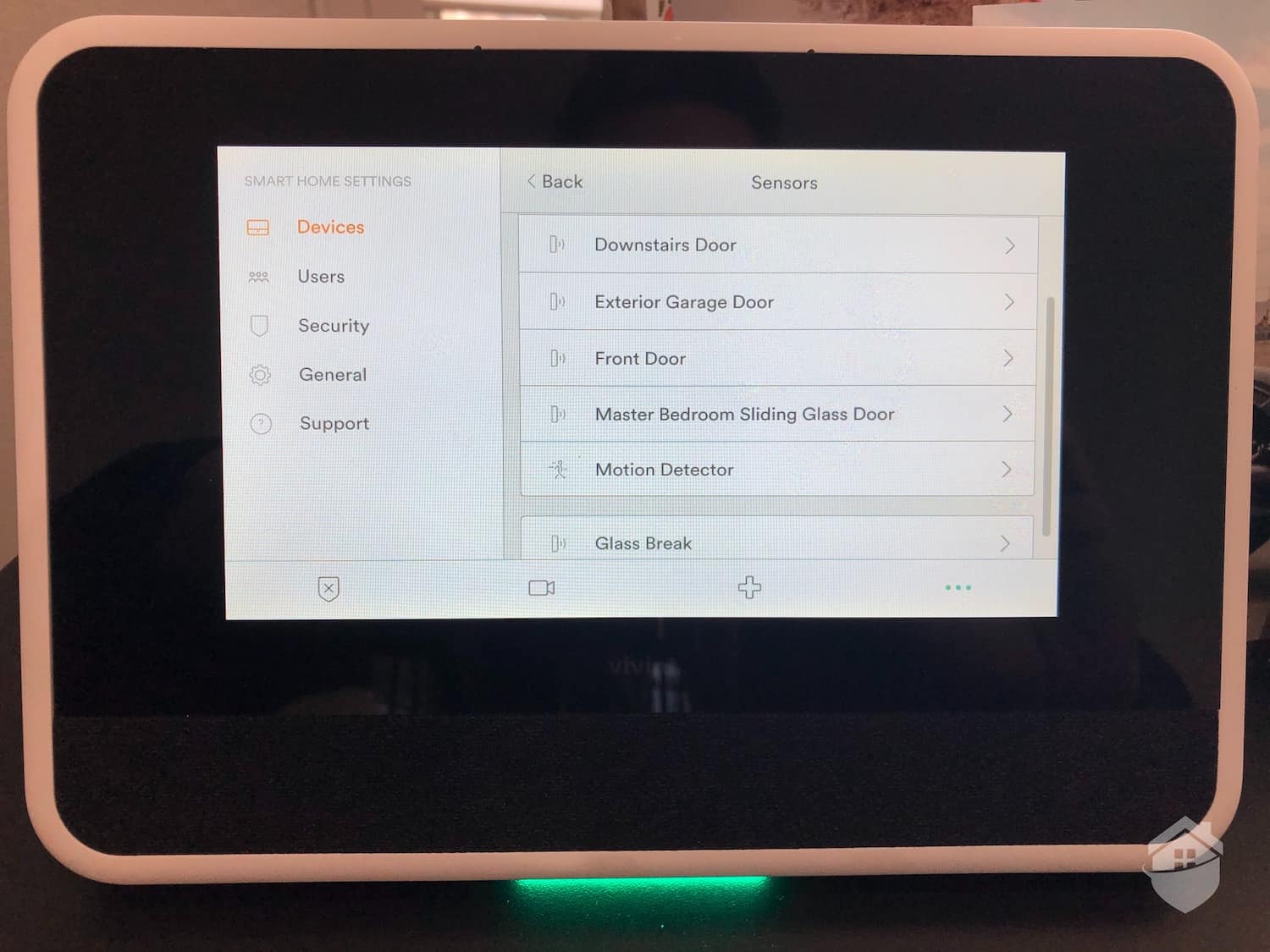
Managing the Sensors on the Vivint Smart Hub
Final Thoughts on Vivint Sensors
We think Vivint’s sensors are very well-made and can protect your home against would-be burglars, thieves, and even natural disasters like kitchen fires and carbon monoxide poisoning (Vivint can’t protect you from hurricanes and tornadoes — not yet anyway).
We really liked the professional installation offered by Vivint. This way we didn’t have to think about proper placement of the sensors, and we didn’t have to worry about setting it up incorrectly. So Vivint is a great option for the non-DIYers out there.
FYI: After using the service, we can say that Vivint’s monitoring plans are reasonably priced, especially for what you get. If you choose Vivint, we recommend going with their premium Smart Control subscription. This plan includes home automation and video support.
We were most impressed with Vivint’s recessed door sensors. These hidden sensors really take modern home security to the next level. After all, who wants stick-on sensors that guests can see and that can potentially fall down in the middle of the night? Not us! Not if we can have invisible sensors anyway.
In our experience, it seems that you can have it all with Vivint. Just be sure to bring your pocketbook to the party… you’ll need it.
Common Questions (and Answers!) About Door & Window Sensors
How Do Door Sensors Work?
Remember that big, loud, vibrating bell over the front door that would ding every time someone entered and left your house? No? Some of us do remember, though, and let’s just say this: The bells were low-tech, but they did their job. They were, for lack of a better term, the “door sensors” of early home security.
And just like back then, securing entry and exit points is still a high priority in any home security purchase. After all, if a door or window is unlocked or otherwise unsecured, you could be risking a devastating break-in. Luckily, door sensors today are much quieter and a whole lot sleeker.
Did You Know? Door sensors are also called “contact sensors,” “door/window sensors,” and “entry sensors.” Different names, same great protection.
The typical door sensor we work with, including Vivint’s sensors, come in two parts: One that we attach to our door frame, and the other we attach to the door itself. Each part contains a system of magnets and a reed switch. It all functions pretty simply. When your system is armed and the magnets separate (or the door opens), you are instantly alerted via mobile notification and/or the siren sounds in your home, depending on system settings. Not much more than that, really.
How Do Window Alarm Sensors Work?
Like door sensors, window alarm sensors work under that same internal reed switch-magnet system. When someone opens the window, the circuit triggers an alarm, which then triggers an alert to your smartphone. This all happens in real time, so if that someone happens to be an intruder, we can prepare ourselves and take appropriate action.
FYI: Most window alarm sensors are wireless, but even the wired ones, we’ve found, work in much the same way: the reed switch separates from the magnet, triggering an alarm. The only difference there is that you have to connect the sensor to your security system’s control panel, or keypad, to run power to it.
The good news is that 95% of all home security systems these days have peel-and-stick sensors (including Vivint!), which makes for simple installation. And since window alarm sensors are so inexpensive, we think it makes perfect sense to work several window sensors into your security setup.
How Does a Glass Break Detector Work?
With door and window sensors set up in our home, we know we’re hitting our most vulnerable access points, which will hopefully keep the bad guys out – or at least scare them away once they hear the siren. But that’s not all we can do to shore up protection for those areas. Because as we know by now, criminals are pretty good at getting inside without being detected – and one of those ways is by breaking glass and simply climbing in.
This way, the intruder might not set off our door sensor. And we can’t have that, can we? So with glass break detectors, these trusty gadgets use audio to detect the sound of glass breaking from a radius of about 20 ft. And if you have them armed and connected to a monitoring center, this will alert officials that someone has broken a window.
If you’re not sure you need these, keep this in mind that we’ve found glass-break sensors particularly effective for homes with big skylight-style windows and sliding doors.




